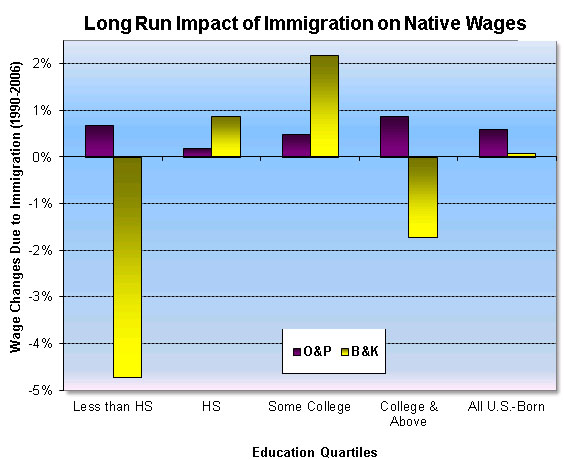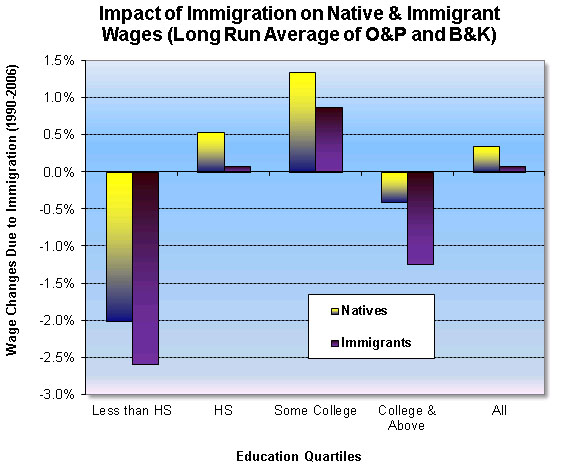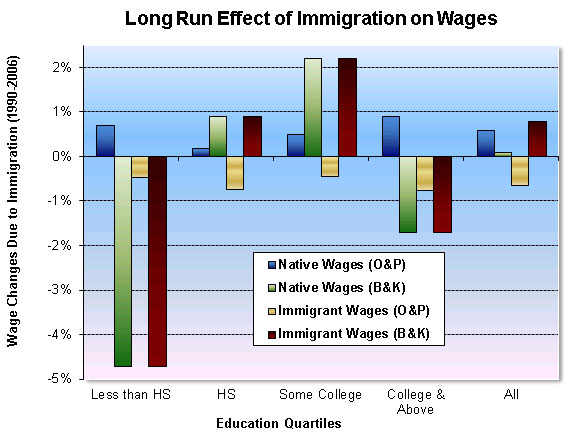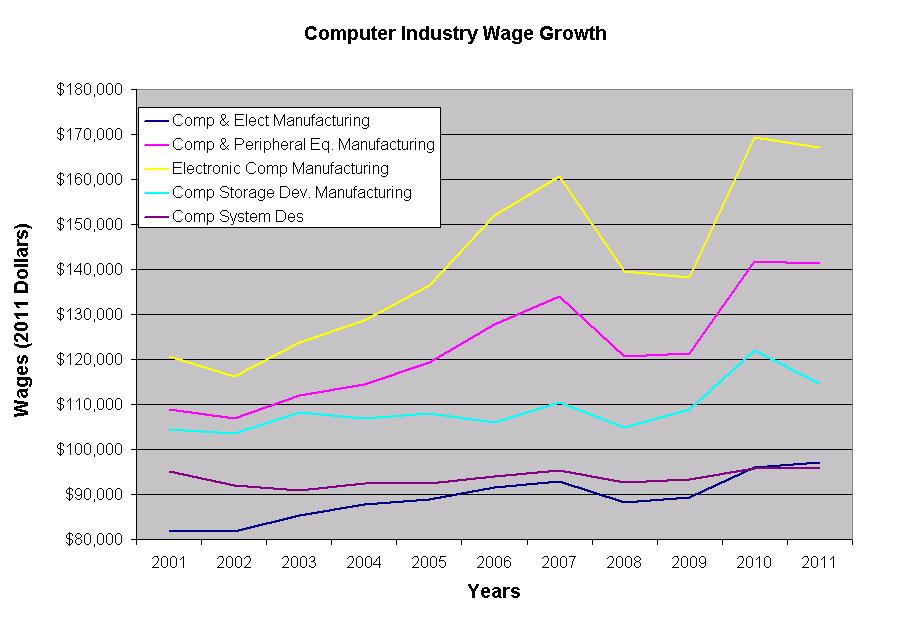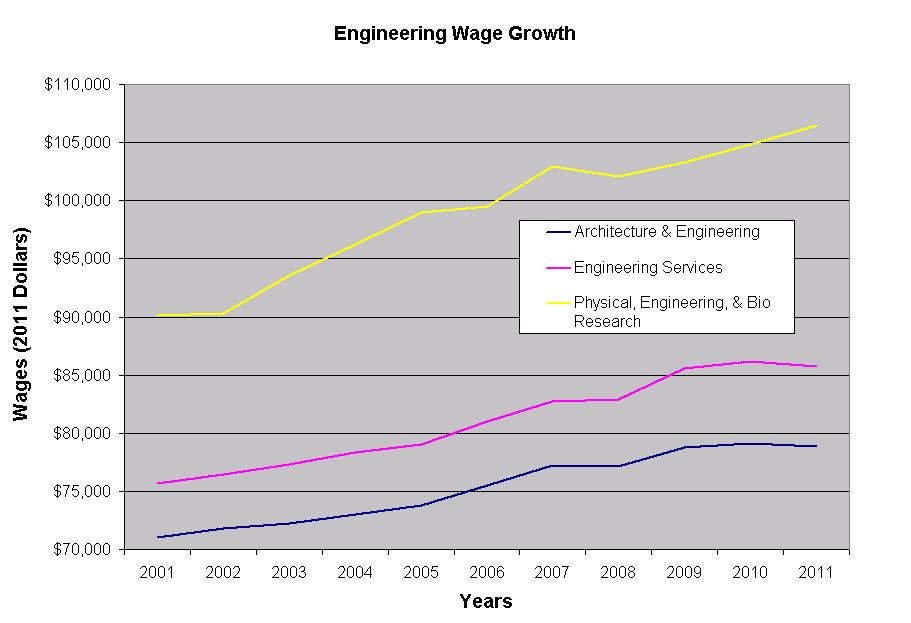After poring through some of the data on the foreign-born proportions in the US during my spare time this past weekend, I came to the conclusion that other than radical open borders advocates and restrictionists, most people don’t really have an idea of just how radical open borders would be. Many pro-immigration people are quick to point to the US’s experience with open borders in the 19th century. But there’s a lot of difference between then and now. On a variety of numerical metrics, the US as it stands today comes fairly close to where it was when borders were most open. This table goes up to 1990, but the 2010 census data puts the total population at 310 million and the foreign-born population at 40 million, so the 1970-1990 trend is geometrically continued in the 1990-2010 period.
- The foreign-born population as a fraction of the total US population as per the 2010 census is about 13%. This is quite close to the 1910 historical high of about 15%.
- The foreign-born population in the 1970-2010 period has been roughly doubling every two decades in absolute terms (it went up from about 10 million in 1970 to 20 million in 1990, then again to 40 million in 2010). Compare that to the US’s heyday of open borders: the 19th century. The foreign-born population from 1850 to 1890 grew at a comparable rate: up from 2.2 million in 1850 to 5.6 million in 1870, and then again to 9.2 million in 1890. Note that the Chinese Exclusion Act and related restrictions started kicking in the last quarter of the 19th century. It’s true that the period from 1920 to 1960 saw little growth in the foreign-born population, due to closed borders.
If the foreign-born population in the US continues to grow at roughly the same geometric rate as for the last 40 years, it will be about 55 million in 2020 and about 80 million in 2030. Possibly by 2020 and definitely by 2030, this would mean that the foreign-born share of the population would be well past the 1910 peak.
What would happen under an open borders policy today that mimicked the pre-1875 immigration policy of the United States? I think it’s safe to say that the growth rate will be notably higher than under today’s business as usual scenario. Even people friendly to open borders worry about getting swamped, which is why many propose a gradual opening of the borders. On the upper end of the estimates is David Henderson’s speculation that up to 300 million people could migrate to the United States in the first two years after open borders. But even a moderate view would involve about 10 million people migrating (many of them temporarily) to the United States in the first year following radical open borders. Since the exact smoothing of the flow will depend on the precise policy contours, I’d say that an increase in the foreign-born population of the United States by about 50-100 million in the first decade following open borders (or something close to open borders, such as DRITI) is a fairly conservative, low-end estimate. If you applied the lowest end estimate of this range, 50 million, assuming that the borders opened in 2010, then in 2020, the foreign-born population of the United States would be at about 85-90 million (give or take a few existing foreign-born people dying), which would make the foreign-born proportion in the United States between 20% and 25% — way higher than at any time in US history. If you took the higher end of the (still conservative) estimate of 100 million more foreign-born people in the United States after a decade of open borders starting 2010, that’d be about 135-140 million foreign-born in 2020, out of a total population of somewhere between 400 and 450 million, which would be 30% or more of the population. (Note also that, for comparison, according to polling data on migration, about 135 million people claim they would move to the US in the near future if the US allowed them to do so legally, and this is approximately in line with the above estimates).
[I’m starting 2010 because that’s the last year for which census data is available, though of course one cannot travel back in the past to open the borders].
How does this compare to other countries? Here’s a chart of the foreign-born shares of OECD countries (it’s a few years old, unfortunately). The only countries that have a ~20% or higher population share are Luxembourg, Chile, Australia, New Zealand, and Canada. Luxembourg is extremely small, and is part of the EU, so its anomalously high value may be worth discarding. With the exception of Luxembourg, none of the foreign born shares crosses 25% (though this might have changed since 2006, for which the data was available). Chile’s inclusion in the OECD is misleading for the purposes of this comparison, since its per capita GDP is less than $20,000, so less than half that of the United States. Canada, Australia, and New Zealand have extremely low population densities overall. According to Wikipedia’s summary, the US ranks 76th in population density with a density of 34 people/square kilometer. Canada (4 per square kilometer), Australia (3 per square kilometer), and New Zealand (16 per square kilometer) fail to make it to the top 200 in the list. If you exclude all of these, you’re left with basically no country.
But even if you keep Canada, Australia, and New Zealand in, the most ultra-conservative estimate for the foreign-born share in the United States under an open borders type policy is comparable to the highest foreign-born currently seen in the OECD, and more realistic estimates of what would happen in the US under open borders with respect to the foreign-born population place us literally in uncharted territory.
All these data are of course well known to most people in the migration debate. Restrictionists often embrace statistics and factoids of just the sort described here to paint open borders as truly lunatic. And in a sense, they’re right. Open borders is a truly radical, unprecedented proposal. Historical analogies can get us this far, but they simply don’t cut it quantitatively when describing the potential effects (good or bad) of open borders today.
Note that the reason I focused on the United States is simply because I’ve been looking at US-related data in the recent past. However, the case for open borders is universal, so one might wonder if there are other countries for which open borders would be less unprecedented. I don’t know an answer offhand, but it’s also true that many other countries are much smaller (in area and population) compared to the US, so their enacting open borders wouldn’t quite mean the same thing as the US doing so. However, I don’t see how the stats would look less dramatic for most other countries. If Canada announced open borders, then given that the population of Canada is about 1/10 that of the US, a much smaller migrant inflow would have a much larger impact on the foreign born proportion. In fairness, though, it may be argued that since Canada has a much lower population density, some of the overpopulation-related arguments touted by restrictionists have far less force in Canada.
What I think this points to is that when open borders advocates rely on historical precedent regarding open borders, they need to determine the appropriate adjustment factors for a reasonable comparison between the past and present, and justify what these adjustment factors should be. A naive copy-and-paste of population growth rates between the past and present suggests that the current immigration policy of the United States (and possibly of many other countries) already produces results similar to the heyday of open borders. This also raises the question of why we intuitively expect far larger migration flows today, in both absolute and proportional terms, compared to 19th century open borders. Falling transportation and communication costs are the obvious culprits that come to mind, but other technological and social changes might also be involved (for instance, a society that’s far more welcoming of different races and cultures may reduce the perceived and real costs of migrating for people from these different races and cultures — independent of the role of government policy). The next question would be whether all aspects of society have become faster at equal rates, or whether some aspects (people’s ability to physically migrate) have become much faster compared to others (the ability to form new industries and residential areas to accommodate large population influxes), along with the implications of these different degrees of speeding up for the effects of open borders.
